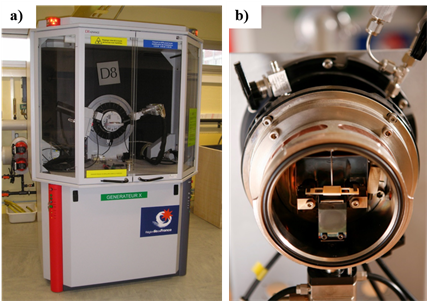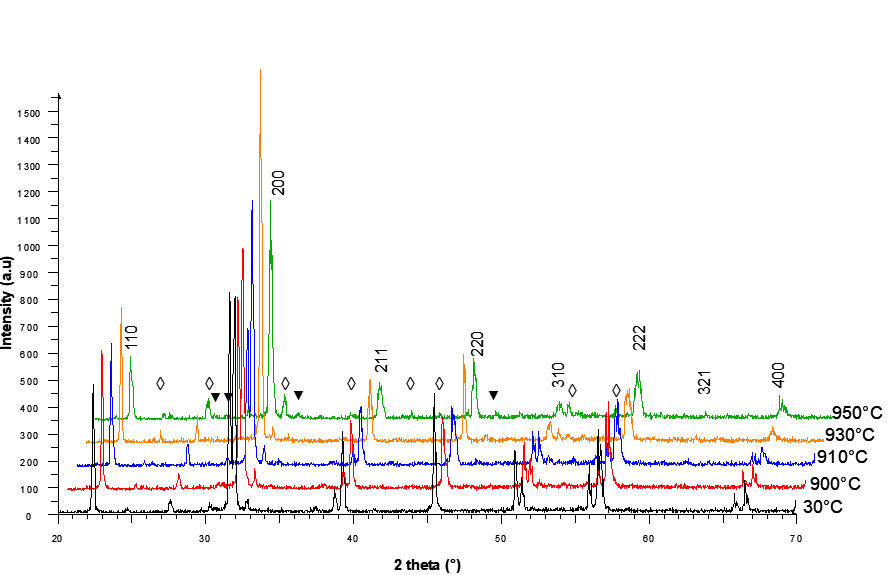Nanomagnetism & Oxides Laboratory
Powders and single cristals X-ray characterization
Contacts: A. Forget, D. Colson
The group owns X-rays diffractometer for powders (D8 Advance - Bruker), equipped with a high-temperature chamber to characterize the synthesized materials (identification of crystalline phases, evaluation of the crystallinity of the samples and calculation of the lattice parameters) and study their structures from ambient to 1100 ° C under controlled atmosphere.
D8 Advance (Bruker-axs) diffractometer
This diffractometer is dedicated to the analysis of powders by reflection (Bragg-Brentano):
Programs:
The Diffrac-AT program allows the control and data processing. The EVA program is designed for data analysis.
Data base
The PDF2 ICDD database is used to identify the phases which are present in the samples studied.
This diffractometer is dedicated to the analysis of powders by reflection (Bragg-Brentano):
- The goniometer is θ-θ type, source is driven by a rotation of θ while the detector is driven by a rotation of θ. The sample plan is fixed, it is placed in the center of the circle goniometer and perhaps given a rotational movement perpendicular to the scattering plane.
- The source is a ceramic copper anode.
-One super speed detector "LynxEye", a 1-D detector based on Bruker AXS’ compound silicon strip technology, ideal for kinetic studies in experiments in temperature.
- One high-temperature chamber "MRI" usable under controlled atmosphere (vacuum, inert gas, air) for in situ measurements from 20 to 1150 ° C.
Programs:
The Diffrac-AT program allows the control and data processing. The EVA program is designed for data analysis.
Data base
The PDF2 ICDD database is used to identify the phases which are present in the samples studied.

Fig.1. (a) X-rays diffraction system for powders analysis (D8-Bruker-axs). (b) The high-temperature chamber usable under controlled atmosphere (vacuum, inert gas, air) for in situ measurements from 20 to 1150 ° C.

Fig.2. Example of X-rays diffraction diagram at high temperature of a powdered multiferroic compound, BiFeO3. Note the emergence of a cubic paraelectric phase indexed from 930 ° C to 950 ° C with the lattice parameters a = 5.615 Å (◊: Bi25FeO39, ▼: Bi2Fe4O9)